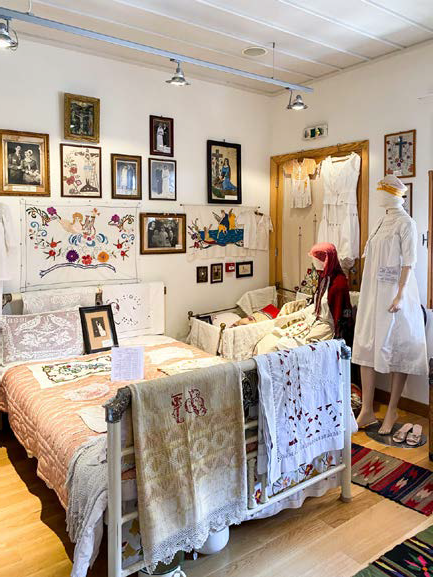
5 minute read
A new approach: Towards a common identity through culture
How the preservation of cultural heritage is shaping both countries mutual understanding today.
by Damla Ceyda Uzun
Turkey and Greece are two nations that undeniably share a common past - the impacts can be seen in a lot of different elements today. Easily, by looking at museums, associations and the approach of the EU.
This article discusses the impact that the preservation of common cultural heritage (linked to the exchange of populations) has on the identity of the two countries and their understanding of each other today.
The importance of culture during the exchange
Before moving to the preservation of cultural heritage, it is important to understand why culture was such an essential thing for the exchanges. In terms of its meaning, it can be defined as “their way of living life”, including tangible and intangible elements. Furthermore, it creates a distinct identity for a certain group (for example a population). Culture also provides the group with safety, because they have something to rely on in life, a community, sharing the same values and traditions.
As the people were forced to emigrate to the other side of the Agean, keeping their culture was possibly one of the most important elements for the exchanges. While they were exposed to the loss of homeland, famine and the language barrier, their culture and tradition kept them alive, giving them some feeling of having their homeland partially with them. Strolling through Thessaloniki, a city that was deeply involved in the exchange of people, it is more than visible that both populations influenced each other culturally, whether it be in food, music or traditional dresses.
Having a common past means in this sense sharing the same cultural elements. And taking into account that culture shapes an identity, both countries are closely connected on a cultural level.
The beginning of preserving common cultural heritage
But in order to make these cultures visible and sustainable, it has to be preserved and shared among people and generations. In Turkey, the preservation of cultural heritage concerning the exchange of populations started in recent years, the late 90s. Since then, the population raised awareness and interests for what happened in the past and stayed a taboo for decades. People started reflecting about the past and especially about their family’s roots and identity.
The first steps of preserving cultural heritage offered them the opportunity to understand both nations better and approach each other as “brothers and sisters” that have lived through similar experiences. Thanks to associations and cultural events taking place more and more, physical exchange between both nations became a habit and something to look forward to.

The foundation of Lausanne Treaty Emigrants
One active association is the Foundation of Lausanne Treaty Emigrants, or "Lozan Mübadilleri Vakfi" in its original Turkish name, based in Istanbul and founded by children and grandchildren of the exchanges. Its mission is about keeping the culture that was brought by the people alive and passing it onto the next generations.
In order to achieve this, the Foundation of Lausanne Treaty Emigrants organises travels, publications and events. Furthermore, the association offers a wide range of literature and publications about the common past. In 2005, it was given the Europa Nostra award for its efforts in preserving cultural heritage.
The establishment of the first Turkish museum about the exchange
In 2010, the year Istanbul was selected European Capital of Culture, Turkey’s first museum dealing with the exchange of populations was opened in the district of Çatalca in Istanbul. It focuses on tangible cultural heritage, presenting daily possessions of the exchanges that they could carry during their journey, like books, stamps and even newspapers.

Further museums in Kavala
Another museum is established in Kavala as the “Kavala museum of Greek refugees”. It was created by third generation refugees with the support of the Association of Asia Minor of Kavala. Through presenting customs, recipes, songs, photographs and more, the museum shows how the city of Kavala has been shaped by the exchange of populations. It aims to show the gradual integration of refugees into daily life after arriving in Greece.
Focusing on the culture of Cappadocian Greeks, the Historical and Ethnographic Museum of Capadoccian Greeks is located near Kavala, in Nea Karvali Village. Founded in 1981, it is one of the earliest establishments to preserve common cultural heritage and Turkey. In 1997, it was selected as the “Museum of the Year” by the European Union.

The bridge for better mutual understanding
As mentioned above, culture creates identity. The preservation of cultural heritage makes both countries embrace their similarities and creates a bridge for better mutual understanding. The exchange was a challenging part in Greek-Turkish history that shaped both countries. Even today it is a very emotional topic for both sides combined with pain and the loss of homeland.
However, it also shows that a difficult past can be a new beginning, a new approach of understanding each other and happily sharing common things. Without the migration movement, such an exchange of cultures and common values would not have taken place. Now, Turkey and Greece are capable of celebrating their similarities and embracing each other’s cultures, collaborating through cultural events. A common cultural heritage is an enrichment for both countries.










